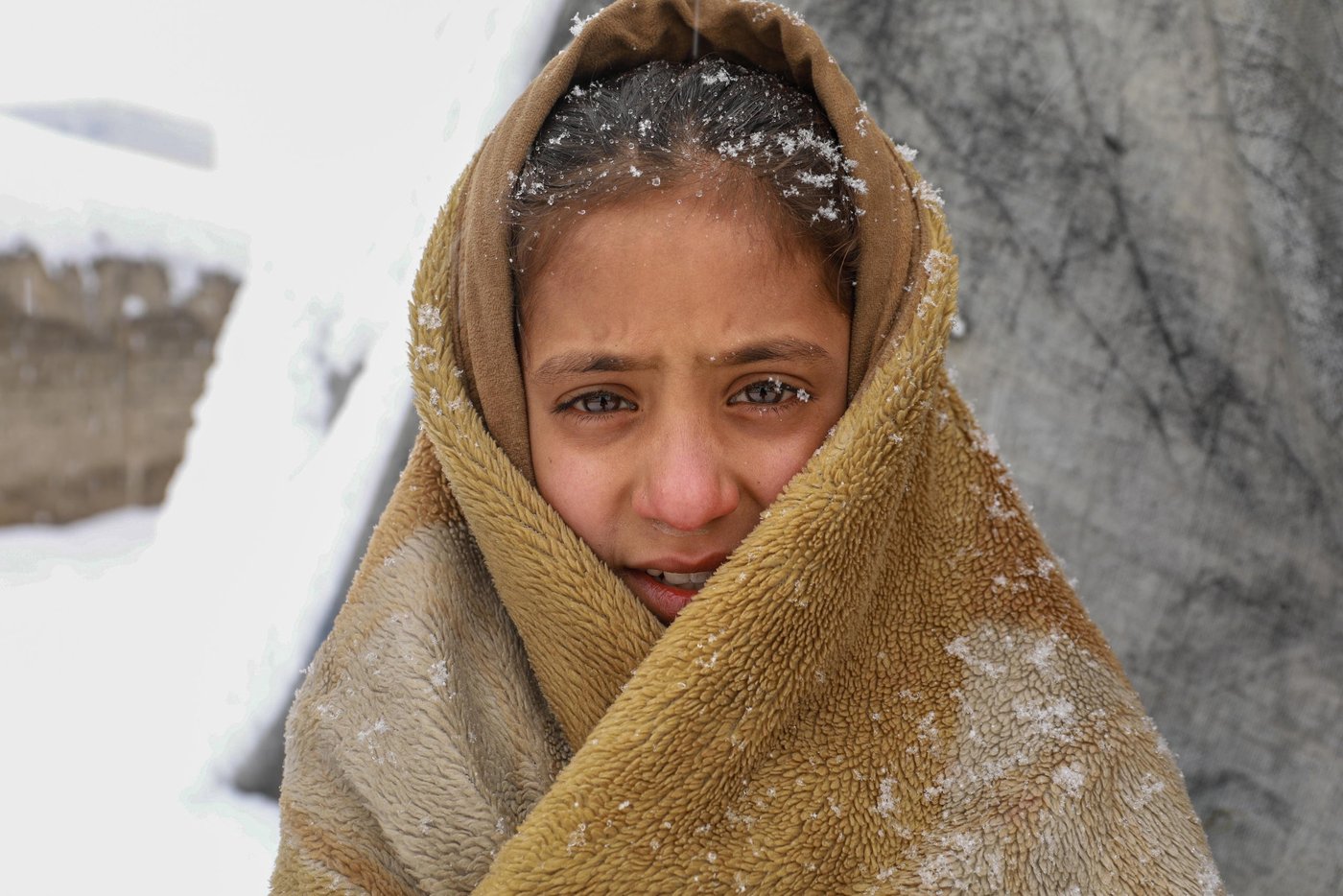Vi möter 11-åriga Raqia tidig morgon efter en bitande iskall natt med mycket snöfall och en medeltemperatur på nära 16 minusgrader. Ett vitt täcke av snö har lagt sig på tälten i Hiwadwal, en kåkstad i utkanten av huvudstaden Kabul. Det är bara en av många sådana bosättningar i Kabul.
Förra året byggde NRC Flyktinghjälpen 154 nya hus och förbättrade 330 befintliga hus till familjer på flykt i och runt huvudstaden Kabul. En del av dessa hör till bosättningen i Hiwadwal.
Köp gåvor med mening
De flesta som bor här har tvingats fly från konflikter i det krigssargade landet. Somliga är nya i lägret och andra har levt här i flera år. En del har också bott i grannlandet Pakistan innan de återvände hem, bara för att tvingas fly från sitt hem ännu en gång.
Två tredjedelar av alla som flytt från sina hemområden har sökt skydd i områden kring de större städerna som Kabul, Nangarhar, Kandahar, Balkh och Herat.
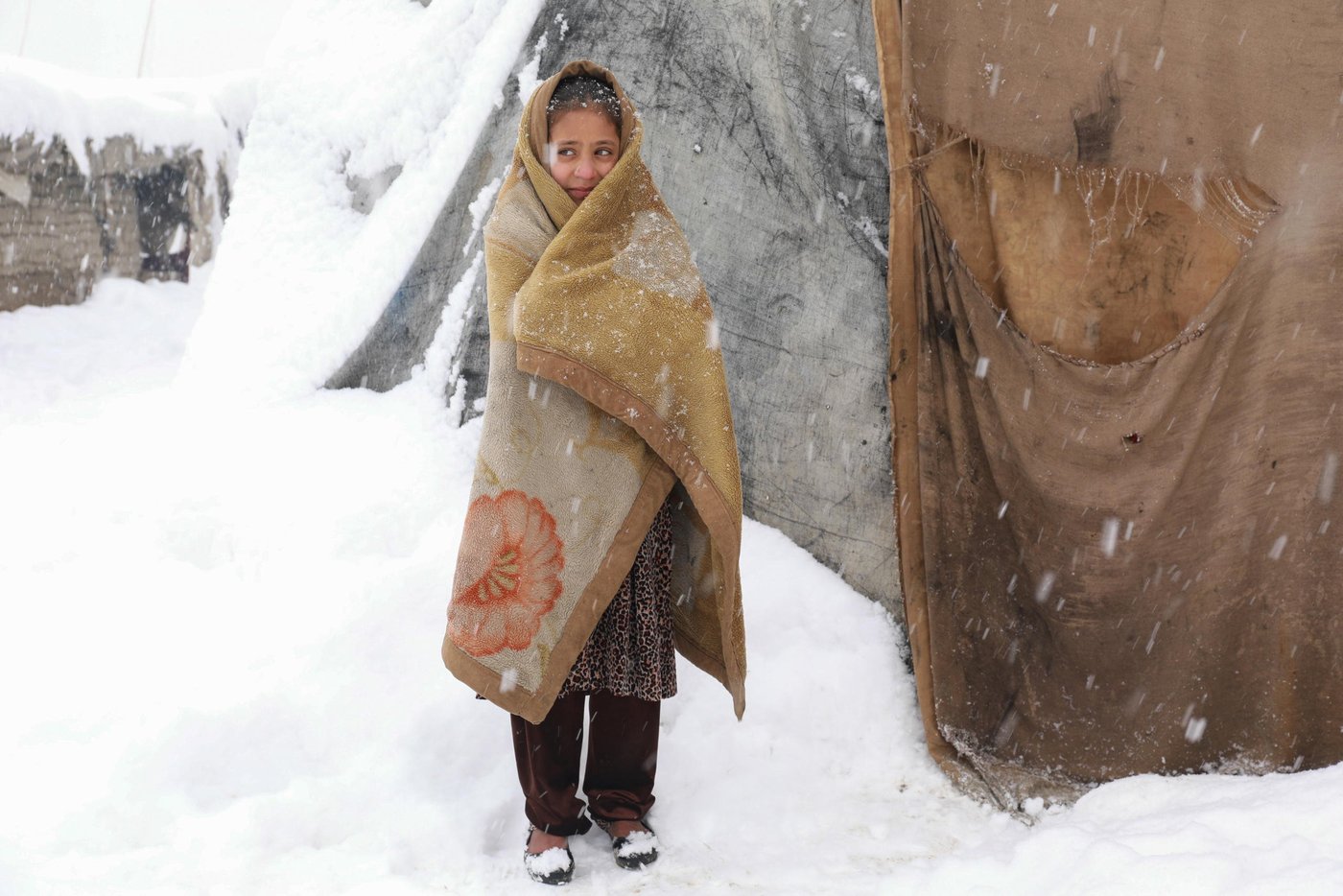
“Det här är de enda kläder och skor jag har” säger hon och drar filten hårdare runt kroppen.
Raqia står utanför familjens enkla hem med filten runt axlarna. Kläderna hon har på sig är tunna sommarkläder och skorna är enkla plastsandaler – hon är barfota i dem.
Mer än 1,2 miljoner interna flyktingar befinner sig över hela Afghanistan boendes i kåkstäder och så kallade informella bosättningar. Mer än hälften är barn under 18 år.
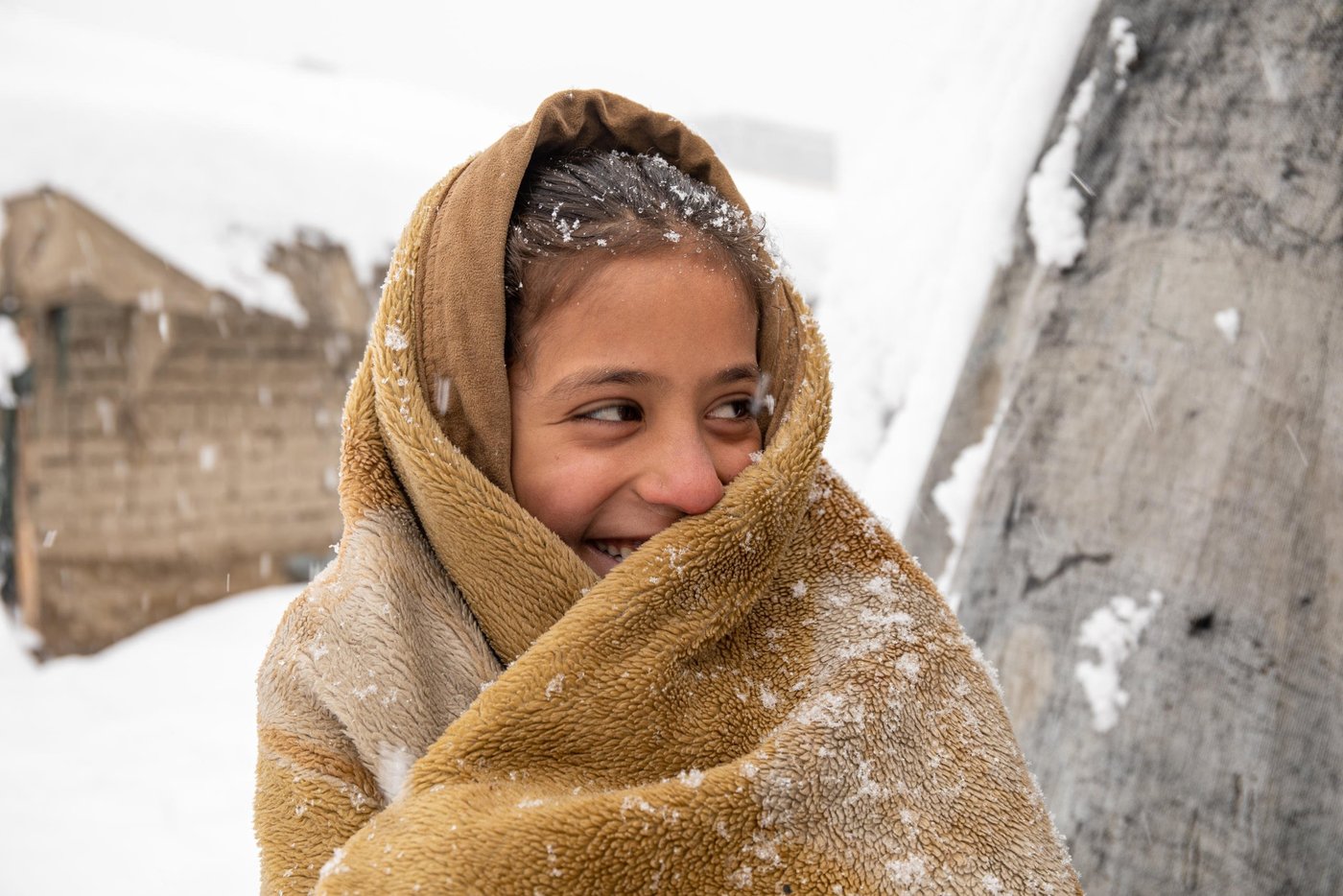
Hennes enkla hem är byggt av plast, presenningar, mattor och lera. “Vi har en liten ugn men inget att elda med. Vi använder kartonger och plast som vi samlade under sommaren men det är räcker inte för att hålla värmen. Vi brukar elda en gång om dagen, men när det är så här kallt så blir det oftast två gånger per dag”
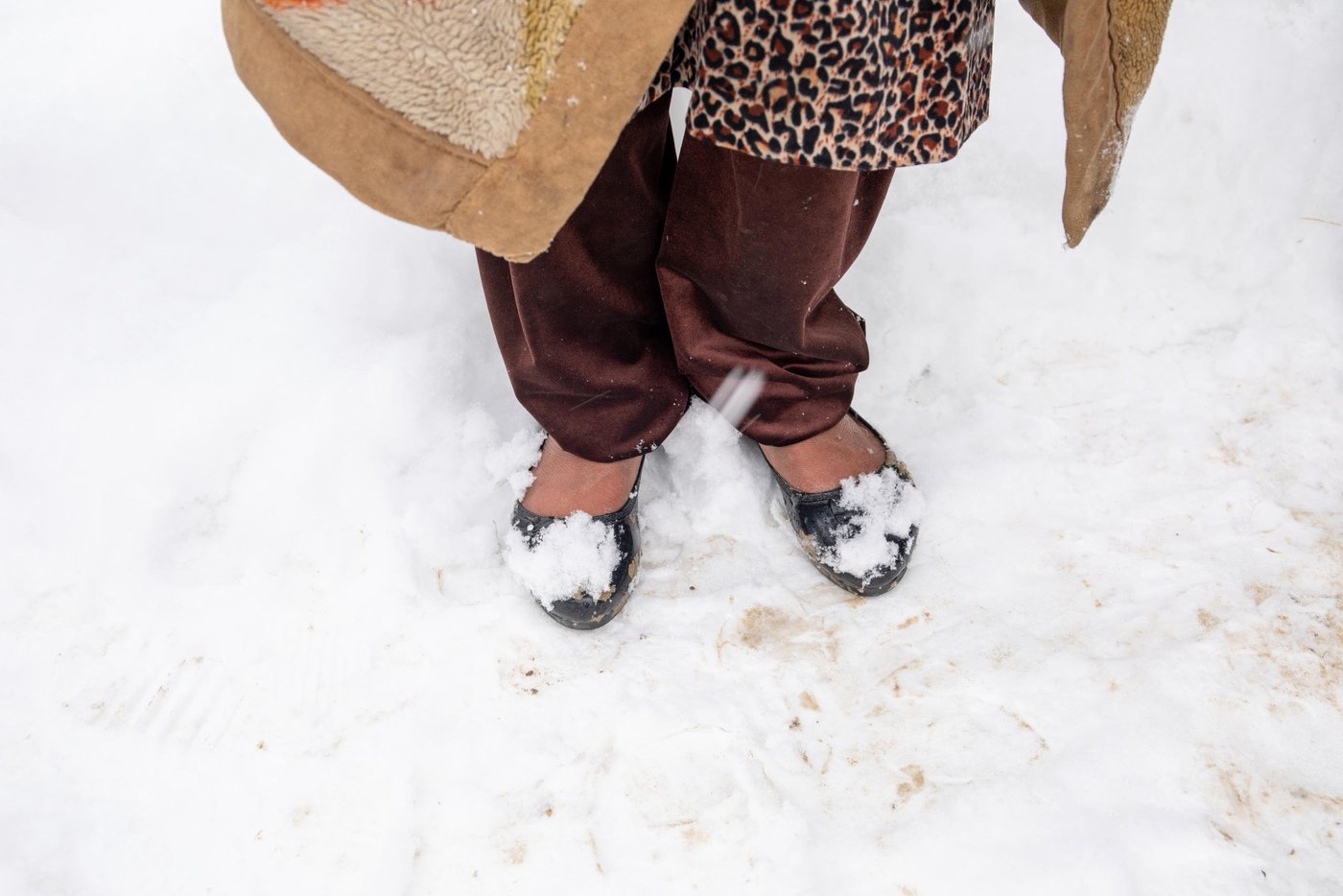
Så fort värmen från ugnen slocknar blir det iskallt. “Det är så kallt på natten att jag vaknar tidigt för att jag fryser. Mina fötter är stelfrusna och ibland har jag ingen känsel i tårna” säger hon och tittar ner på sina fötter.
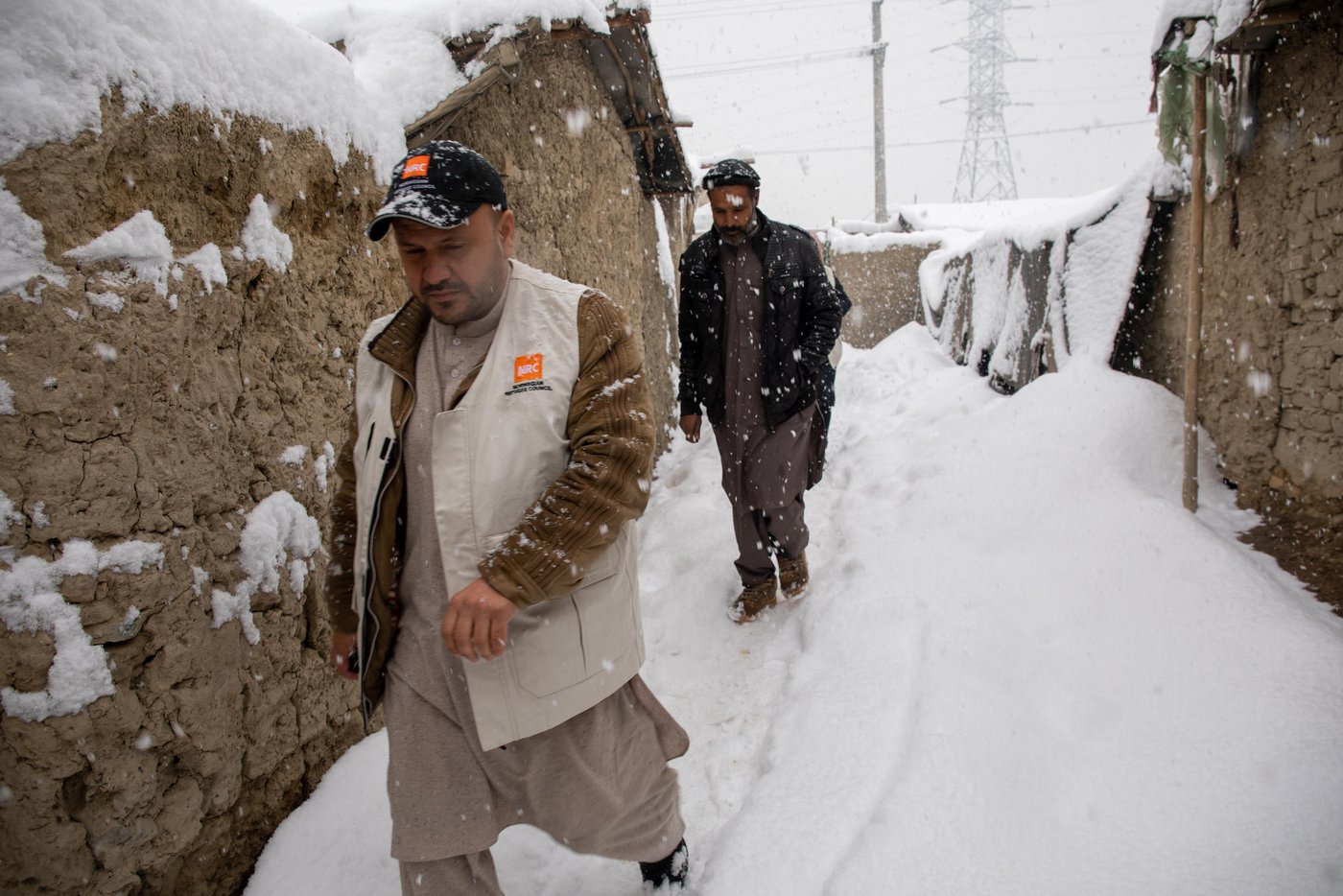
Efter tungt snöfall och temperaturer ner till nästan -20C har det rapporterats att många av tälten har rasat ihop av snötyngden. Teamet från NRC får en överblick av situationen och kan bedöma behovet av hjälp.
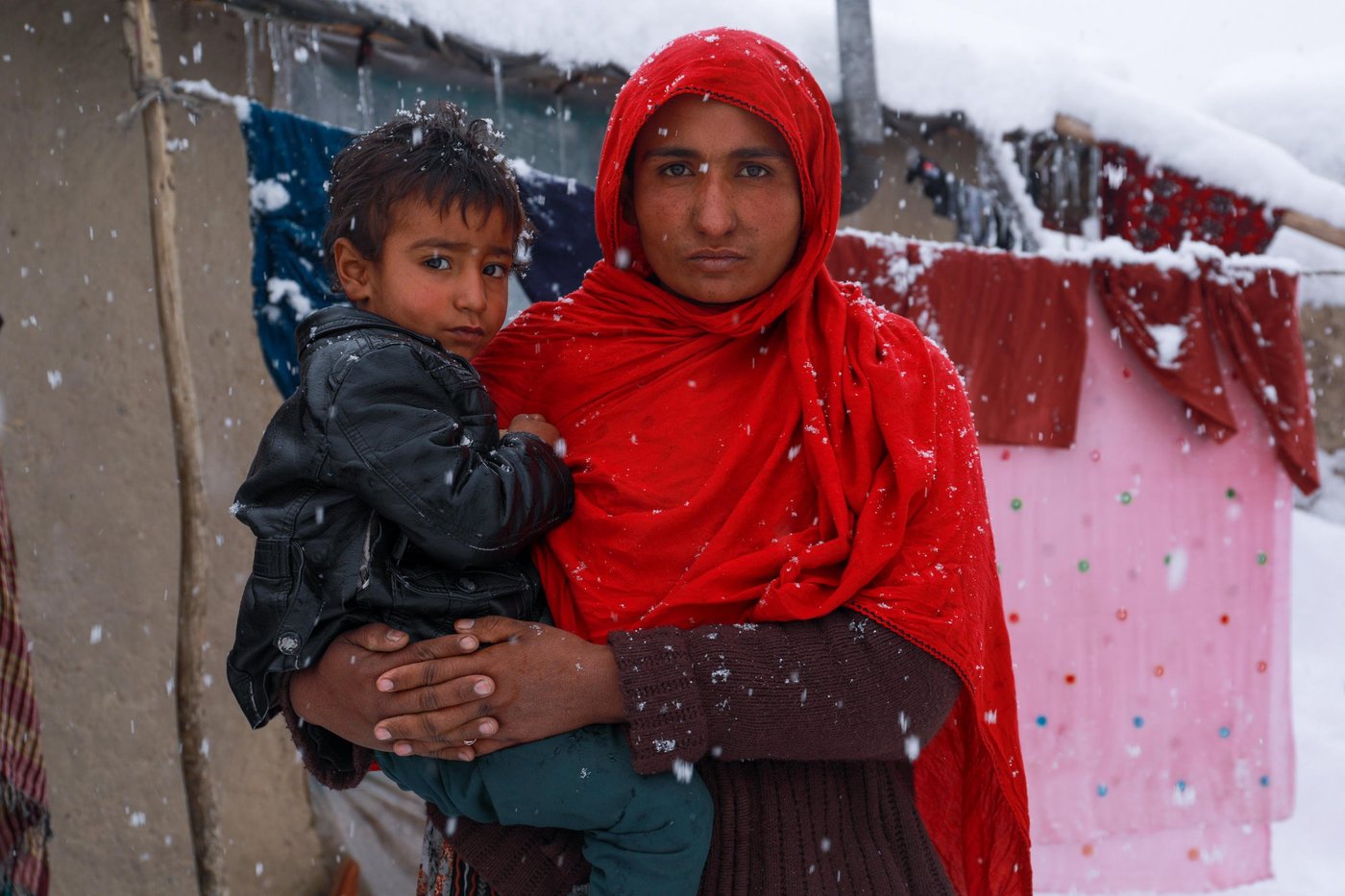
Teamet träffar Shahnaz, 34 år, änka och mamma till tre barn. “Jag sov med barnen när taket plötsligt rasade in över oss. Som tur var skadades ingen. Jag ropade på hjälp och snart dök en granne upp för att hjälpa oss ur den akuta krisen” säger hon.
“Tack Gode Gud för att vi lever och att vi har snälla grannar. De har tagit hand om oss även om de har det trångt. Nu bor barnen och jag med tre andra familjer i ett litet hus med två rum.”
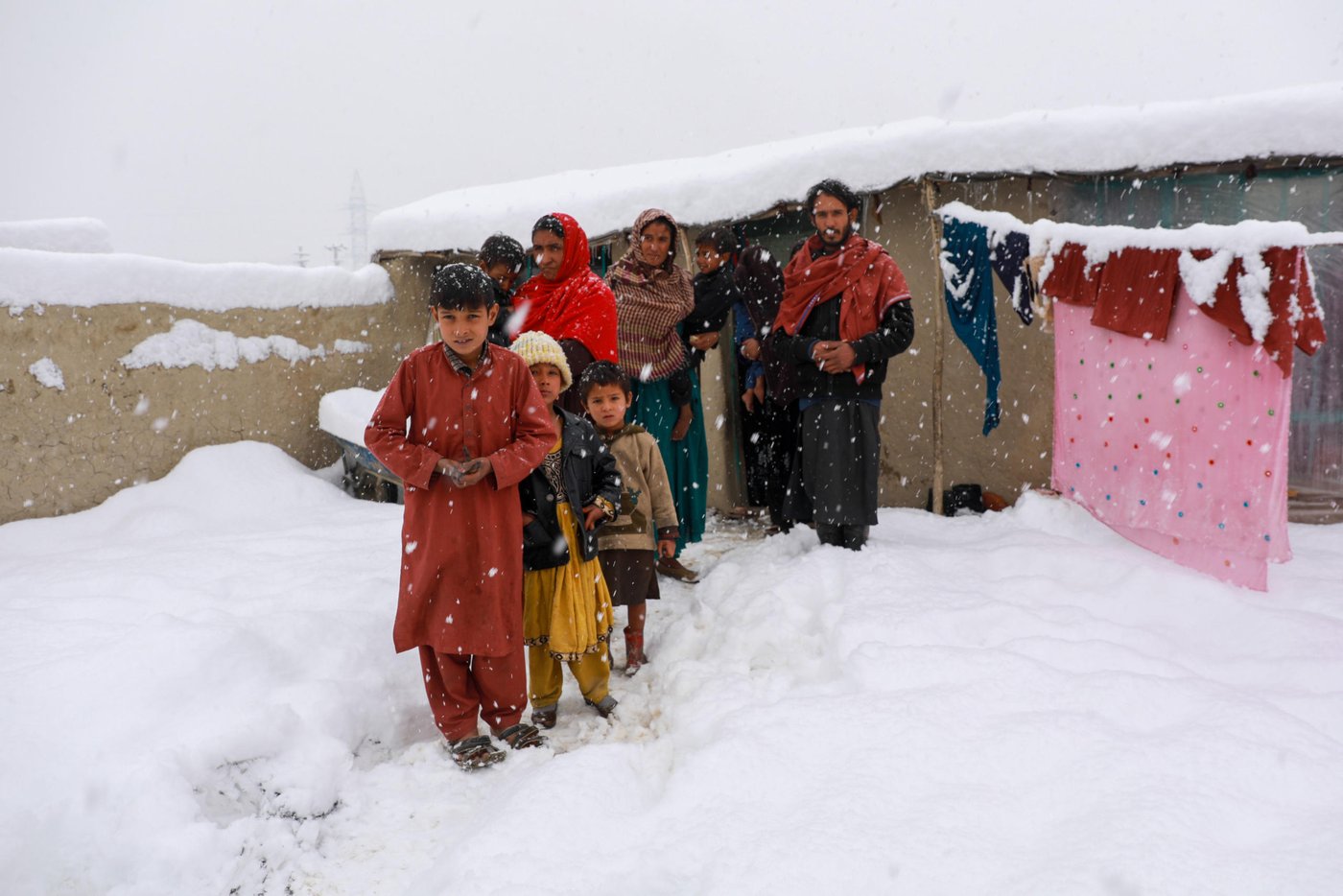
Shahnaz tigger på gatorna i Kabul för att kunna skaffa mat till familjen. Nu har hon en ny utmaning att lösa.
“De två största utmaningarna och oro var att klara av att skaffa mat och hantera kylan. Nu kan jag lägga till att vi inte har tak över huvudet som ännu en oro.“
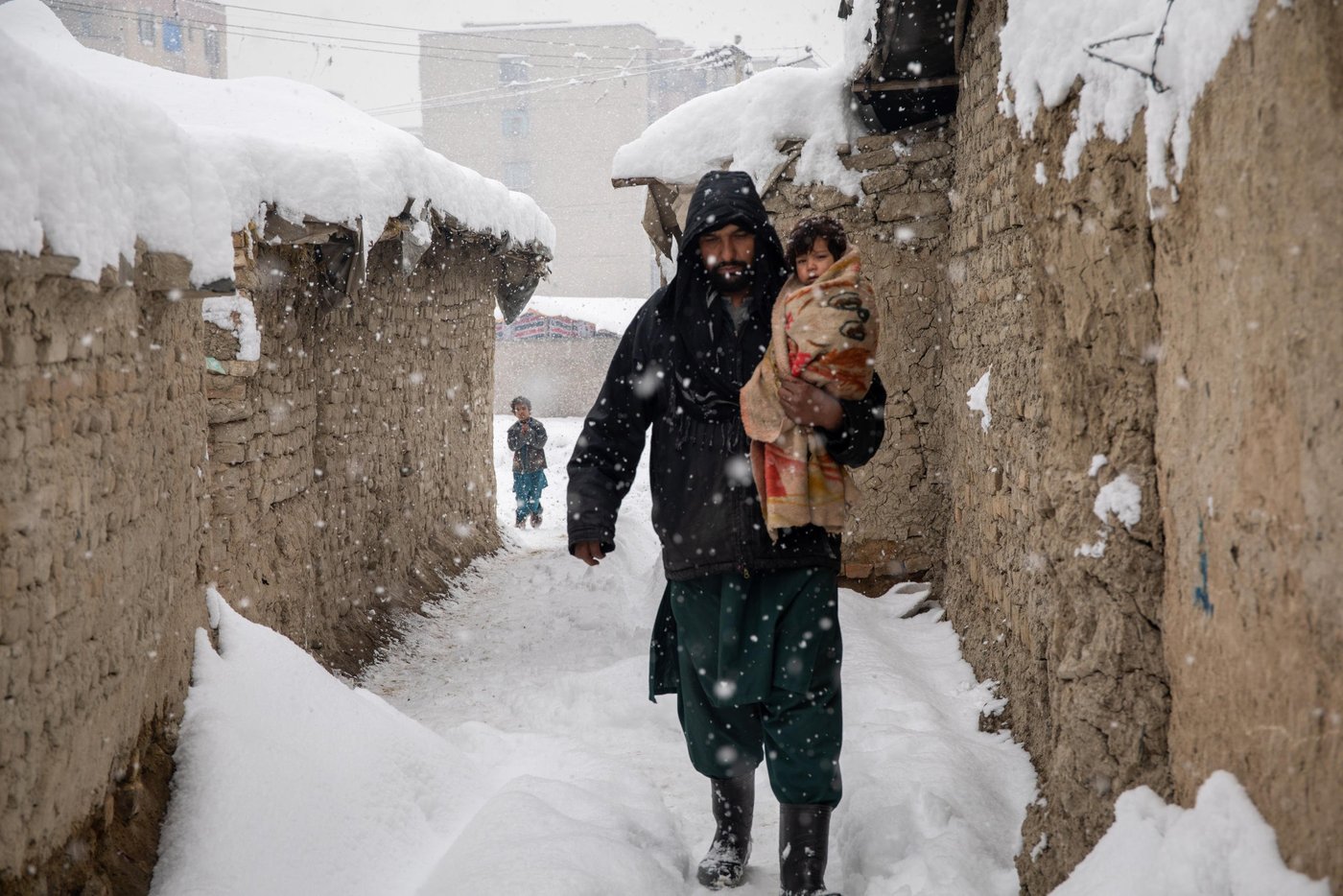
Vi mötte också Mirwais, 42 år. Han är på väg till läkaren med sin son Ramin som är 1,5 år. Han har haft feber, huvudvärk och buksmärtor de senaste tre dagarna.
“Jag hoppades på att han skulle bli bättre så jag slapp ta honom till doktorn. Jag har inga pengar till medicin och det är andra gången jag måste ta ett av barnen till läkaren”
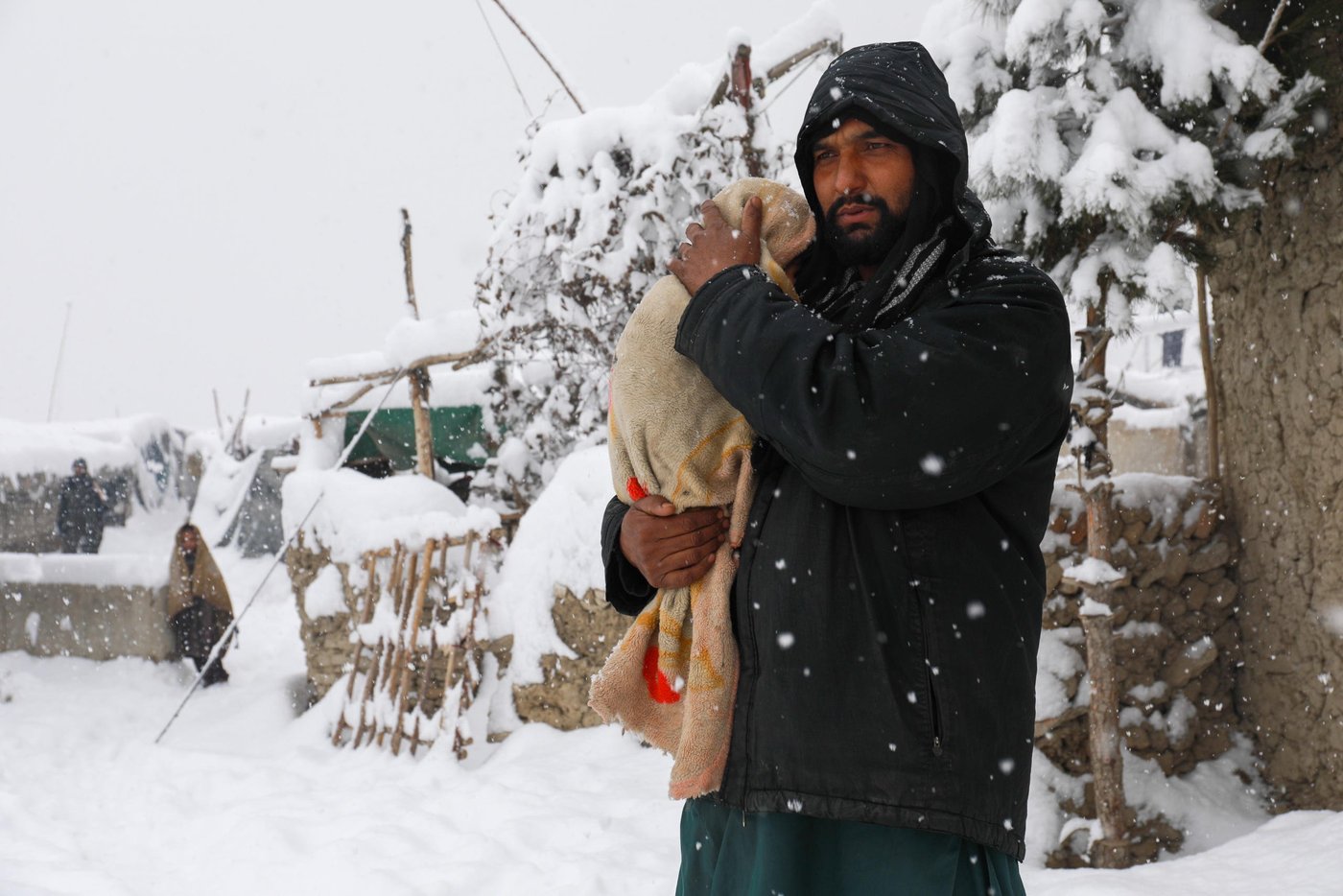
Totalt så saknar 30 procent av Afghaner den mest grundläggande hälsovården. De som lever i de svåraste områdena, där humanitära organisationer kämpar, är också de som lider mest av att inte få sjukvård.
Mirwais är orolig för sina barn. “Vi har inte råd med bränsle eller ved för att värma upp huset eller laga mat. Det enda vi kan elda är kartonger och plast. Det är väldigt giftigt och gör barnen sjuka.” säger han medan han skyndar sig genom snön till läkaren.
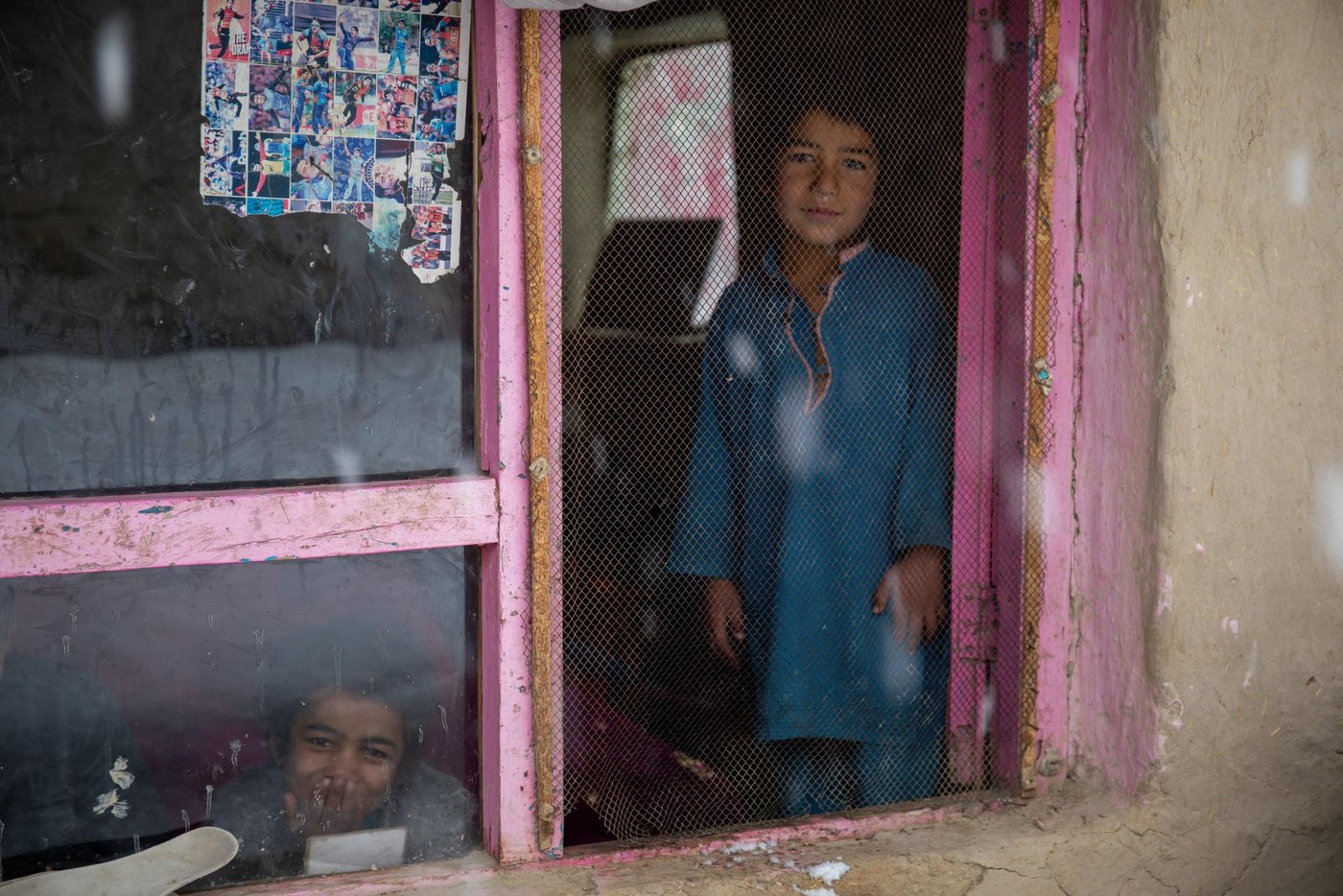
I samma område mötte vi Shawan, 6 år. Förra vintern bodde han också i ett hus byggt med plast, mattor och lera. Men förra året byggde NRC Flyktinghjälpen 154 nya hus och reparerade 330 hem omkring Kabul där familjer på flykt bor. Shawan tillhör en av dessa familjer som fick sitt hus reparerat.
“Nu behöver vi inte frysa och kan hålla oss varma inomhus” säger han, vinkades till oss genom fönstret till det nya huset.
Efter det senaste snöfallet kan NRC teamet konstatera att många av dessa hus nu huseras av mer än en familj.
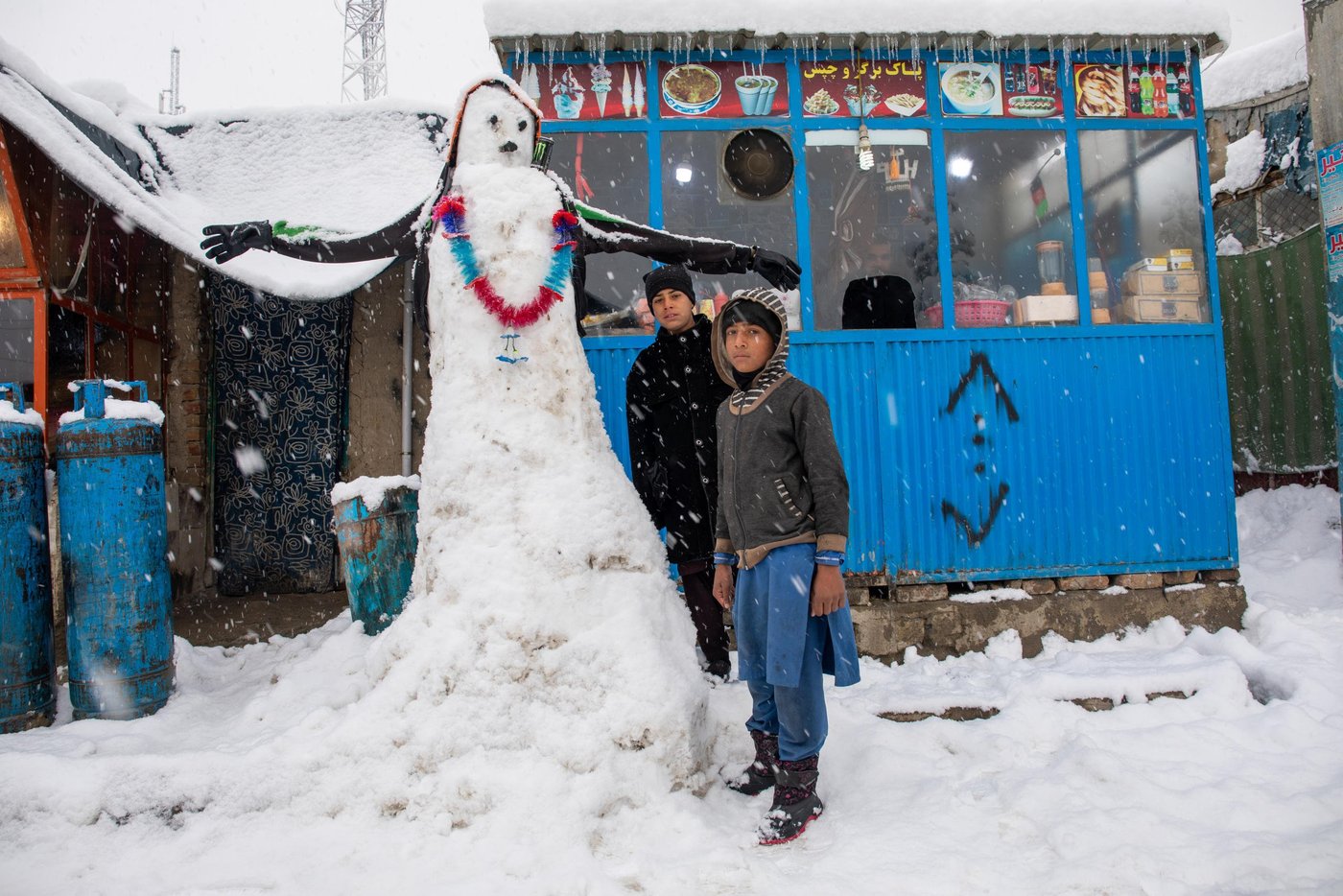
Trots att barnen i Kabuls bosättningar har många fler bekymmer är de flesta är de som andra barn och hittar glädjen i vardagen. Utanför en kiosk träffar vi två pojkar som har gjort en snögubbe, för en stund kan de glömma problemen och ha roligt tillsammans i snön.


